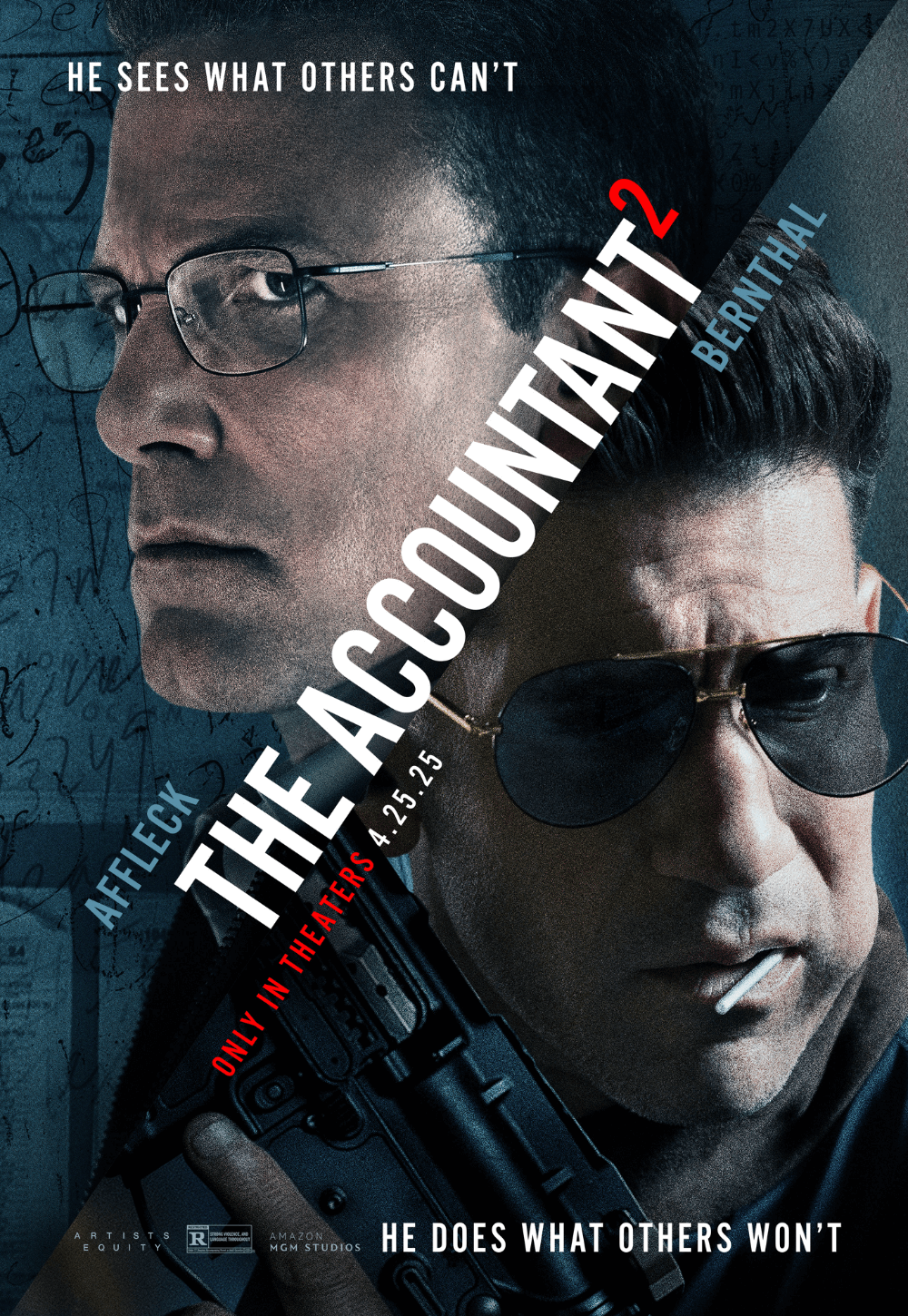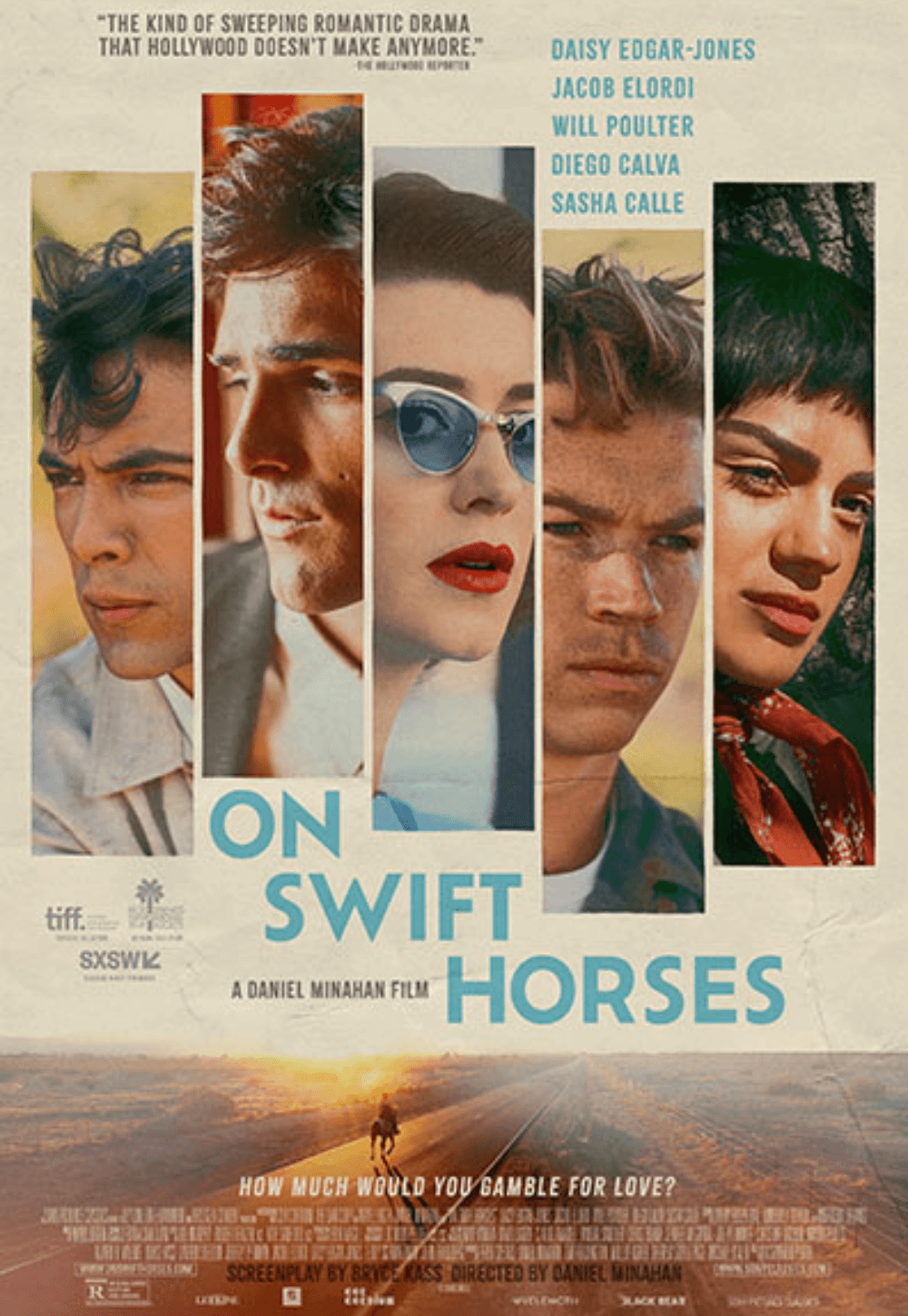
I Saw the TV Glow
By Brian Eggert |
Jane Schoenbrun’s I Saw the TV Glow has a rare power. Watching the film conjured specific memories about my relationship with media during adolescence. More than friends or even a fully formed identity, I had X-Men comic books, Star Trek: The Next Generation, and old movies—obsessions that made me practically unrelatable in ‘90s social cliques, before geekdom and nerdom became so commonplace. Yet, consumed with equal measures of fascination and repetition, they revealed aspects of my personality to me, even if I wasn’t always conscious of what they revealed. TV shows and cinema have that effect on certain individuals; it’s part of what makes media special. You might not be able to articulate what you love about it or why you keep returning to it, but there’s something inside that makes a connection. You might watch your favorite film ten times, but on that eleventh viewing, when you’re 40 years old, suddenly, you realize why you’ve kept coming back for more for so long. That lesson or feeling might become clear at just the right moment, or maybe it never materializes and remains buried in your subconscious. Schoenbrun’s film is about that relationship and, much like their last film, gives way to a thoughtful trans metaphor wrapped in a surreal viewing experience.
Schoenbrun released their debut feature in 2021, the mind-trip We’re All Going to the World’s Fair, which navigates the blurred line between reality and the performative space of the internet. In that film, Anna Cobb’s character Casey performs for strangers online, always aware of being watched, even as her disembodied image is reflected back to her on her computer screen. She and her creepypasta antics, beginning with a blood offering to her laptop to start the “World’s Fair Challenge,” gradually spiral into a disturbed and out-of-control state, encouraged by her warped online audience. Drenched in a similar aesthetic of blacklights, radiating fluorescents, screens, and psychedelia achieved by Eric K. Yue’s many-layered cinematography, Schoenbrun’s sophomore effort once again investigates how people relate to media, what they draw from it, and how it impacts and reflects their lives. Under the surface, the writer-director’s films present allegories for gender dysphoria, where characters feel trapped by reality and see their reflection more clearly in another, unrealized version of themselves inhabiting their preferred media.
After all, it’s a complex, even scary place to be, realizing the disparity between how you appear to the world and how you feel inside. When someone else shares that feeling, you reach out to them and hope to share that common ground. That’s what happens in 1996 when Owen (Ian Foreman), a lonely seventh grader trapped in a restrictive suburban hell, meets the sullen and scowling ninth grader, Maddy (Brigette Lundy-Paine), who seems to be an outsider just like him. Owen lives in a cloistered home, where he and his kindly but beleaguered mom (Danielle Deadwyler) remain under the oppressive watch of the domineering, shadowlike presence of the household’s paterfamilias (Fred Durst). It’s all the more frustrating since Maddy introduces Owen to The Pink Opaque, a late-night show on the fictional Young Adult Network that Schoenbrun appears to have modeled after Nickelodeon’s Are You Afraid of the Dark? (1990-2000). While Maddy obsesses over an episode guide to the strange and unusual show, Owen, ever the outsider, feigns understanding to become her friend. Owen would watch but can’t because his dad—who calls The Pink Opaque “a show for girls”—enforces an embarrassingly early bedtime, preventing him from being able to watch the show live.
 A couple of years later, Owen (now awkwardly aged up to the 28-year-old Justice Smith, who’s terrific in the role, and whose age discrepancy adds to the dysphoria theme) has become just as obsessed with The Pink Opaque as Maddy, who copies the show on VHS so he can watch too. Deemed too scary and mythologically intricate for youngsters, their show involves two psychically linked teens (Helena Howard and Lindsey Jordan) who fight off various monsters of the week, rendered with unsettling practical effects. Whether it’s an oozing ice cream cone or Marco and Polo, two moon-faced goons who look like twisted versions of the “Mac the Knife” character from a series of 1980s MacDonald’s commercials, the creatures report to Mr. Melancholy—another lunar-shaped figure evoking Georges Méliès’ A Trip to the Moon (1902)—the bad guy who inhabits the “Midnight Realm.” This Lynchian bizarro world, modeled to some extent after Twin Peaks (1990-1991), is conveyed in fuzzy lo-fi visuals that have a cheap but unnerving quality, echoing the nightmare throwback quality of the V/H/S franchise. Even Owen and Maddy’s school is called Void High School—VHS, get it?
A couple of years later, Owen (now awkwardly aged up to the 28-year-old Justice Smith, who’s terrific in the role, and whose age discrepancy adds to the dysphoria theme) has become just as obsessed with The Pink Opaque as Maddy, who copies the show on VHS so he can watch too. Deemed too scary and mythologically intricate for youngsters, their show involves two psychically linked teens (Helena Howard and Lindsey Jordan) who fight off various monsters of the week, rendered with unsettling practical effects. Whether it’s an oozing ice cream cone or Marco and Polo, two moon-faced goons who look like twisted versions of the “Mac the Knife” character from a series of 1980s MacDonald’s commercials, the creatures report to Mr. Melancholy—another lunar-shaped figure evoking Georges Méliès’ A Trip to the Moon (1902)—the bad guy who inhabits the “Midnight Realm.” This Lynchian bizarro world, modeled to some extent after Twin Peaks (1990-1991), is conveyed in fuzzy lo-fi visuals that have a cheap but unnerving quality, echoing the nightmare throwback quality of the V/H/S franchise. Even Owen and Maddy’s school is called Void High School—VHS, get it?
To be sure, some of the details in Schoenbrun’s approach feel heavy-handed or not as entrancing as others, and I was constantly feeling pulled in and then yanked out of the story. For instance, The Pink Opaque never looks quite as impressive as Owen and Maddy’s responses to it. Maddy’s obsession means the show “feels more real than real life,” but watching them watch the show, one feels like a third wheel rather than being invested along with them. It’s sort of like someone telling you about their favorite TV show, which doesn’t sound very good, and yet you pretend to be interested even though you have no intention of ever watching it. (Confession: For years, people have been telling me to watch Buffy the Vampire Slayer (1997-2003)—a clear inspiration here—but I’ve never been able to get through an episode, despite several attempts.) So when Maddy begins to cry when her heroes fight off a killer clown in The Pink Opaque, it’s less about identifying with the forced bizarreness of the show that fixates them than with the experience of losing yourself in and finding yourself through media.
When Maddy confesses that she likes girls and asks if Owen does too, he replies, “I think I like TV shows.” Or maybe he’s just “afraid of what’s inside,” as Maddy suggests. Either way, Owen’s sense of feeling crippled by fear and intimidation over a girl who’s far more mature. Maddy eventually tries to convince Owen to run away with her, but he backs out at the last minute, preferring the safety blanket of his suburban home. As several years pass and Maddy has long since disappeared, Owen remains trapped inside himself. He often addresses the audience, breaking the fourth wall to admit that he started a family because he felt that was the thing to do. In moments like this, does Owen see himself as the star of his own TV show? Or is this just another of many throwaway details designed to disorient the viewer? Schoenbrun often introduces random or silly details, such as Owen making a career at a place called Fun Center, where his job is replenishing fresh balls in the ball pit, begging the questions: Where are the balls disappearing to? How is this a full-time job? But the film isn’t interested in story logic, especially as the aesthetics used to convey Owen’s reality and favorite television show begin to alternate, mixing the two until the viewer doesn’t know what’s real. Similarly, Owen’s memory becomes unreliable, blurring the lines between The Pink Opaque and the real world, between youth and adulthood, between the person inside of Owen and the one he thinks he should be.
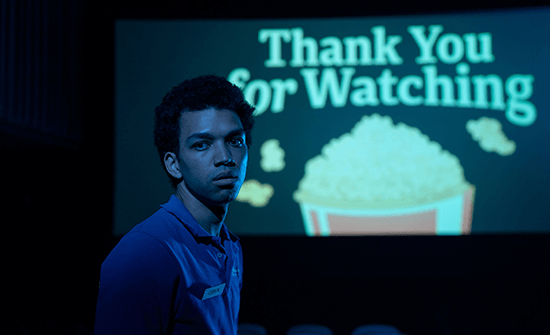 Schoenbrun conceives of some disturbing visuals and darkly comic humor (Maddy’s dread over a potential career at Build-a-Bear Workshop is riotous). But whereas We’re All Going to the World’s Fair felt quite original, if plodding, I Saw the TV Glow relies too much on nostalgia and references. Take the live music performances in the film, meant to evoke a ‘90s and ‘00s sound, though they end up feeling like Schoenbrun’s ode to The Slow Club from Blue Velvet (1986) or The Bang Bang Bar in Twin Peaks. Even the vaguely Vangelis-esque music by Alex G speaks to this theme, overlapping ominous tones with electronic and piano notes on top of diegetic music, aurally suggesting Owen’s layers of identity. Visually, the film has the quality of a Gregory Crewdson photograph, as Crewdson’s subjects often inhabit drab suburban settings and occasionally find some uncanny light beaming out of the floorboards, shining in through the window, or peering down from the sky. Such a thing happens in the climactic moment, and it should be an emotional breakthrough (or breakdown?) for Owen. Instead, I kept thinking about the similarly themed Videodrome (1983), whose protagonist, much like Owen, develops a vaginal opening in his chest that’s connected to television in some metaphysical manner that defines who he is.
Schoenbrun conceives of some disturbing visuals and darkly comic humor (Maddy’s dread over a potential career at Build-a-Bear Workshop is riotous). But whereas We’re All Going to the World’s Fair felt quite original, if plodding, I Saw the TV Glow relies too much on nostalgia and references. Take the live music performances in the film, meant to evoke a ‘90s and ‘00s sound, though they end up feeling like Schoenbrun’s ode to The Slow Club from Blue Velvet (1986) or The Bang Bang Bar in Twin Peaks. Even the vaguely Vangelis-esque music by Alex G speaks to this theme, overlapping ominous tones with electronic and piano notes on top of diegetic music, aurally suggesting Owen’s layers of identity. Visually, the film has the quality of a Gregory Crewdson photograph, as Crewdson’s subjects often inhabit drab suburban settings and occasionally find some uncanny light beaming out of the floorboards, shining in through the window, or peering down from the sky. Such a thing happens in the climactic moment, and it should be an emotional breakthrough (or breakdown?) for Owen. Instead, I kept thinking about the similarly themed Videodrome (1983), whose protagonist, much like Owen, develops a vaginal opening in his chest that’s connected to television in some metaphysical manner that defines who he is.
Easy to admire for how it defies the usual commercial expectations of today’s movies—A24 is the distributor, and the film aligns with their model nicely—I Saw the TV Glow is a trippy experience about soothing teen angst and existential uncertainty with media. But it’s also about the dangers of living your life through media and sublimating your identity, even while acknowledging that for many trans people, becoming who you are isn’t necessarily an easy process. As someone ostensibly raised by media, I found the aspect of Schoenbrun’s film that acknowledges how media can help reveal who you are moving. Even so, many of the methods used feel overly reliant on existing and well-established sources to call the film truly inspired. Then again, maybe that’s the point. In any case, it’s symbolically loaded and readable as a trans allegory, but the narrative doesn’t always engage, and some choices feel broad or more like weird-for-weird’s-sake flourishes. Still, there’s enough here to applaud and consider for days afterward, particularly the raw performances by Smith and Lundy-Paine, who each have a magnetic screen presence. Regardless of the details that nagged at me, I Saw the TV Glow has a way of worming its way into the mind and lingering there long afterward. How appropriate.
Consider Supporting Deep Focus Review
I hope you’re enjoying the independent film criticism on Deep Focus Review. Whether you’re a regular reader or just occasionally stop by, please consider supporting Deep Focus Review on Patreon or making a donation. Since 2007, my critical analysis and in-depth reviews have been free from outside influence. Becoming a Patron gives you access to exclusive reviews and essays before anyone else, and you’ll also be a member of a vibrant community of movie lovers. Plus, your contributions help me maintain the site, access research materials, and ensure Deep Focus Review keeps going strong.
If you enjoy my work, please consider joining me on Patreon or showing your support in other ways.
Thank you for your readership!
Brian Eggert | Critic, Founder
Deep Focus Review


